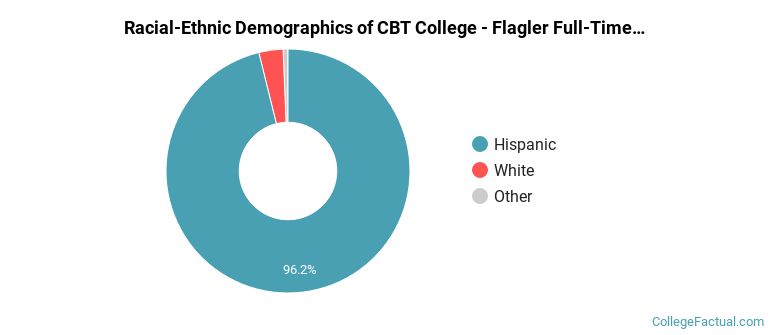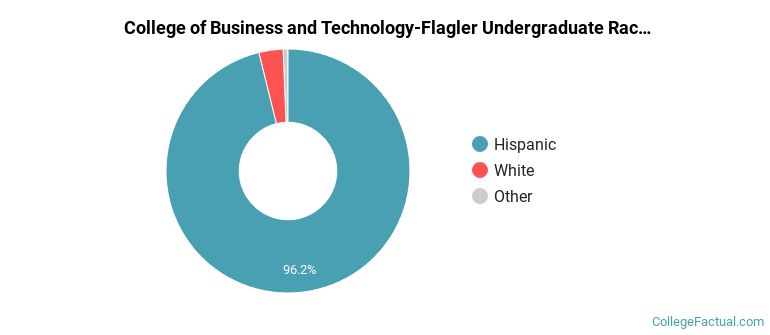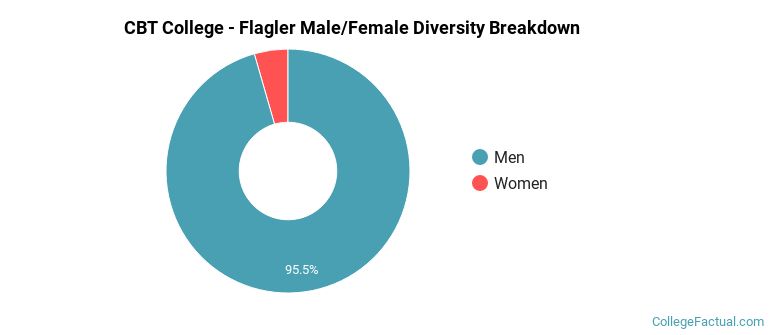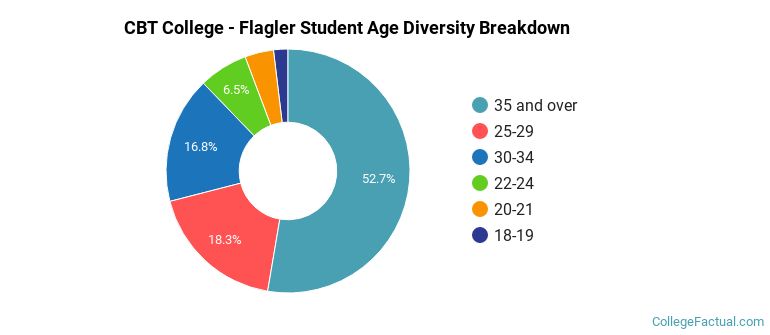 by our College Data Analytics Team
by our College Data Analytics TeamCBT College - Flagler total enrollment is approximately 95 students.
For the gender breakdown for all students, go here.
CBT College - Flagler Racial/Ethnic Breakdown of Undergraduates

| Race/Ethnicity | Number |
|---|---|
| Hispanic | 89 |
| White | 4 |
| Black or African American | 2 |
| Asian | 0 |
| Native Hawaiian or Pacific Islander | 0 |
| International | 0 |
| Multi-Ethnic | 0 |
| Unknown | 0 |
See racial/ethnic breakdown for all students.

| Race/Ethnicity | Number |
|---|---|
| Hispanic | 89 |
| White | 4 |
| Black or African American | 2 |
| Asian | 0 |
| Native Hawaiian or Pacific Islander | 0 |
| International | 0 |
| Multi-Ethnic | 0 |
| Unknown | 0 |

A traditional college student is defined as being between the ages of 18-21. At CBT College - Flagler, 5.73% of students fall into that category, compared to the national average of 60%.

| Student Age Group | Amount |
|---|---|
| 35 and over | 138 |
| 25-29 | 48 |
| 30-34 | 44 |
| 22-24 | 17 |
| 20-21 | 10 |
| 18-19 | 5 |
| Under 18 | 0 |
Footnotes
*The racial-ethnic minorities count is calculated by taking the total number of students and subtracting white students, international students, and students whose race/ethnicity was unknown. This number is then divided by the total number of students at the school to obtain the racial-ethnic minorities percentage.
References
Department of Homeland Security Citizenship and Immigration Services
Read College Factual's Diversity Ranking Methodology.